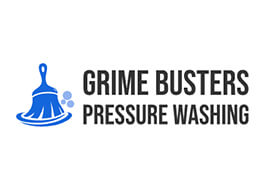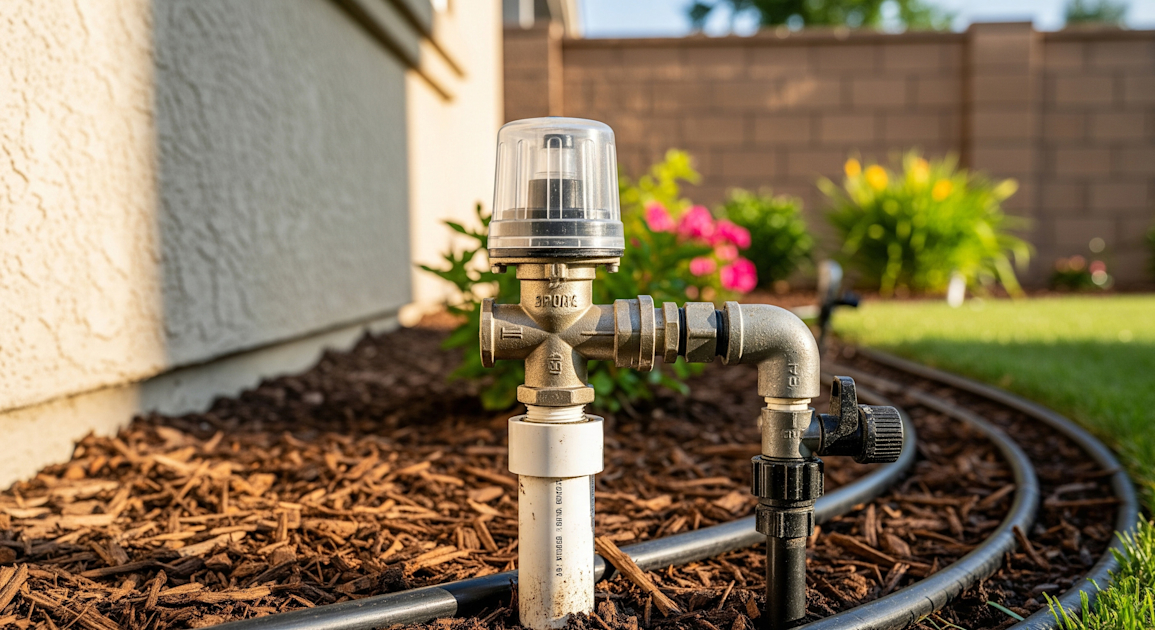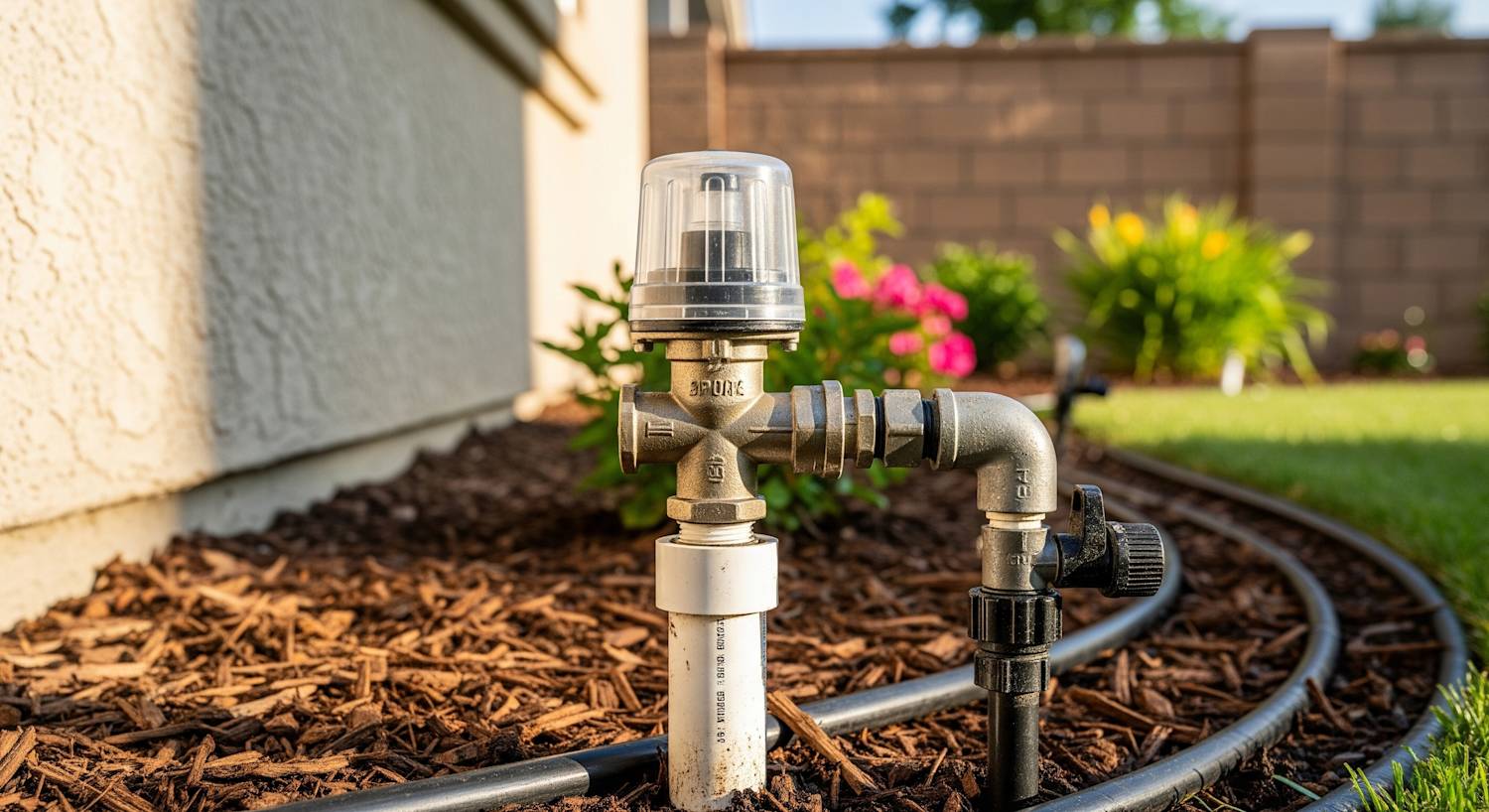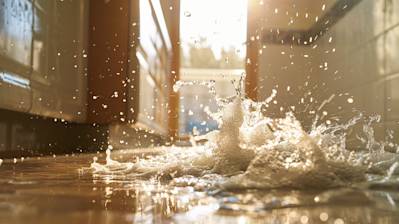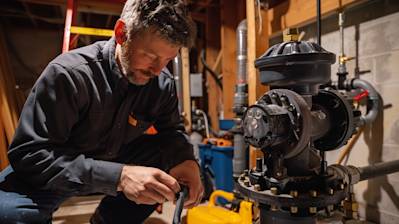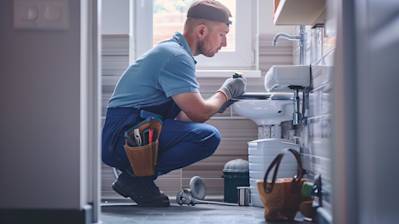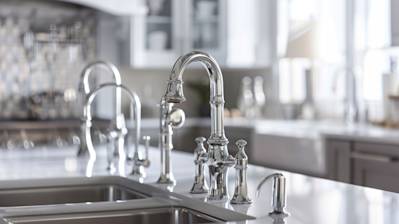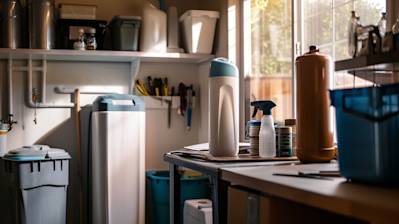Understanding Anti-Siphon Valves
One of the essential components of a functional and effective plumbing, irrigation, or liquid fuel system is an anti-siphon valve. This intuitive invention is instrumental in preventing contaminants and hazardous substances from entering your pipeline and water supply. This article will delve into the workings and benefits of an anti-siphon valve, including how it fits into different piping systems. If you're interested in enhancing your plumbing or irrigation workflow, keep reading to enhance your understanding of anti-siphon valves.
How an Anti-Siphon Valve Works
An anti-siphon valve serves as a protective mechanism against backflow or back siphoning in a liquid system. The valve includes an air gap to block any reverse flow from happening by allowing air into the pipe instead of liquid. Subsequently, this prevents pathogens or contaminated liquid from seeping back into your water supply or gas line.
When the water or fluid flow in the pipe is running normally, the system's pressure keeps the valve closed. Once the fluid flow ceases, the pressure decreases, prompting the valve to open and let in the air, preventing reverse flow.
Different Types of Anti-Siphon Valves
Three main types of anti-siphon valves are:
- Atmospheric vacuum breaker (AVB)
- Pressure vacuum breaker (PVB)
- Reduced pressure zone (RPZ)
Each type varies in features and application but possesses a similar foundation in preventing backflow.
Uses of Anti-Siphon Valves
Anti-siphon valves are essential for:
- Irrigation Systems: When used in irrigation systems, anti-siphon valves protect the water source from exposure to fertilizers, pesticides, or other contaminants that might be in the soil.
- Fuels and Gases: Anti-siphon valves are also found in fuel and gas systems, where they prevent the risk of a siphoning effect that could lead to dangerous situations.
- Plumbing: Used in plumbing, they prevent dirty or used water from flowing back into the potable water supply.
Installation of an Anti-Siphon Valve
The correct installation of an anti-siphon valve is crucial for its effective functioning. Here are some steps to installing an anti-siphon valve:
- Identify the Water Source: The first step is to identify your water source. It would be best if you placed the anti-siphon valve downstream of the main water line. This shields the water source from potential backflow.
- Choose the Right Valve: Depending upon the type of system where you intend to install the valve, it is crucial to choose the correct category of anti-siphon valve. For instance, for domestic use, an Atmospheric Vacuum Breaker or Pressure Vacuum Breaker best fits the needs.
- Install the Valve: Once you've chosen the right valve, install it at the right height. Ideally, it should be installed at least six inches above the highest point of usage downstream.
By following these steps, you can ensure a safeguard against contamination and enhance the efficiency of your plumbing or irrigation systems.
Maintenance of Anti-Siphon Valves
To keep your anti-siphon valve running effectively and efficiently, regular inspection and maintenance are essential. It is prudent to routinely check for damages or leaks and fix any issues promptly. Also, before the onset of winter, remember to empty your valve to prevent the possibility of freezing, which could cause further damages.
In essence, an anti-siphon valve is a valuable safeguard in any household or industry where irrigation systems, plumbing, or fuel and gas systems are operational. Not only does it protect your water supply or gas line from potential contamination, but it also enhances the overall efficiency of the system where it is installed. With regular maintenance, an anti-siphon valve can serve reliably for a long time.
Pros of Anti-Siphon Valve
Prevents Backflow
Water Purity
The fundamental role of an anti-siphon valve is to prevent the backflow of water from the distribution systems. This feature is particularly important because it maintains the purity of the water supply. In situations where your hose is immersed in a dirty pool or harmful chemicals, the valve ensures these contaminants do not flow back into your potable water source. The valve thus acts as a shield protecting your water system from harmful elements.
Regulation Compliance
In many jurisdictions, backflow prevention is not just something nice to have but a regulatory requirement. Compliance with such regulations can save you from hefty fines and even imprisonment. One way of ensuring you adhere to these rules is by installing an anti-siphon valve.
Ease of Installation
Anti-siphon valves are known for their ease of installation. Compared to traditional valves, they're simpler to install because they only need to be attached to the end of a faucet or spigot and connected to a hose or watering system. There's no special training or skill required, and the whole process can be completed in minutes.
Cost-Efficiency
Affordable Solution
As a homeowner or business owner, you want solutions that are both efficient and affordable. Anti-siphon valves meet both criteria. They are cost-effective solutions that offer great value for money. Compared to other kinds of valves, they are generally cheaper but still deliver excellent performance.
Reduce Water Wastage
The anti-siphon valve's blocking mechanism also helps to save water in your irrigation system by preventing water leakage. It does not allow water to flow from the hose or pipe when there's no pressure, stopping unnecessary water wastage.
Cons of Anti-Siphon Valve
Not Ideal for Low-Pressure Systems
Anti-siphon valves rely on a certain level of water pressure to function effectively. If the pressure is too low, they may not work correctly and could permit backflow. They may not be the best choice for you if you live in areas where water pressure is generally low.
Limited Placement Options
Anti-siphon valves should be installed at a higher point than the rest of the irrigation system because they rely on gravitational pull to avoid backflow. However, this could limit your placement options since there may not always be a suitable higher point to install the valve, especially in flat terrains or spaces without adequate elevation.
Complicated Repair Process
Despite their easy installation, anti-siphon valves can become tricky when it comes to repairs. They include a multitude of small parts that are not easy to disassemble and reassemble. Moreover, accessing internal components for cleaning or repairing can be quite challenging, potentially requiring professional help and therefore increasing the maintenance cost.
Susceptible to Freezing and Damage
Anti-siphon valves, especially those made of plastic, are susceptible to damage from extreme weather conditions such as frost and freezing temperatures. The valve may crack or break under these circumstances, leading to leaks and the eventual failure of the valve. This vulnerability requires you to frequently check and maintain the valves, especially during cold weather.
Inability to Withstand High Pressure
Just as they struggle with low pressure, anti-siphon valves find it challenging to deal with extremely high pressure. This is because high pressure may cause the valve to jam, leading to water leaks and potentially allowing backflow. If your water source has high pressure, you might need to look for other types of valves that can handle the extra force.
Myths and Misconceptions about Anti-Siphon Valves
Anti-siphon valves are incredibly useful devices in various plumbing, irrigation, and water distribution systems. They play a crucial role in preventing backflow and contamination of potable water sources within these systems. Despite their importance, there are numerous myths and misconceptions associated with anti-siphon valves. It's important to debunk these untruths to ensure proper usage and maintenance of these devices.
Anti-Siphon Valves Are Not Required
One of the most common misconceptions about anti-siphon valves is that they are not really necessary for most plumbing systems. This couldn't be further from the truth. The purpose of an anti-siphon valve is to prevent potentially contaminated water from flowing back into the potable water supply, acting as a one-way gate for water flow. Without these valves, your system is at risk of siphonage if the pressure in the supply line drops below atmospheric - an occurrence not at all uncommon.
Backflow Only Occurs in Industrial Settings
Another common myth is that backflow issues are only a concern in industrial settings or large-scale water supply systems. While these settings may experience severe consequences in the face of backflow, the issue is not exclusive to them. Even a home garden irrigation system might cause backflow, contaminating the home’s potable water supply. The reality is that anti-siphon valves are crucial in all settings.
All Backflow Preventers are the Same
It is also often mistakenly believed that all types of backflow preventers are the same and serve the same function. While it's true that their primary goal is to prevent backflow, different types exist to serve different purposes and handle different pressure and flow conditions. Anti-siphon valves, for instance, are usually installed above ground level and meant for low hazard situations. Other devices, like reduced pressure backflow preventers or double check valves, may be needed in more high hazard situations.
An Anti-Siphon Valve Can Work In Any Orientation
The orientation of the anti-siphon valve during installation matters significantly for its functionality. If installed incorrectly, the valve will malfunction, negating its purpose. The correct orientation depends on the specific design of the valve but generally, the valve should be tilted at a slight angle to allow for proper anti-siphon action.
Anti-Siphon Valves Require No Maintenance
Some individuals may be under the impression that once an anti-siphon valve is installed, it requires no further upkeep or maintenance. Unfortunately, this is not correct. Like any other machinery, anti-siphon valves require regular checkups to ensure they are functioning optimally. Over time, wear and tear can lead to failure of the valve’s internal components, resulting in ineffective backflow prevention. Regular inspection and timely maintenance will extend the life and efficient operation of the valve.
Anti-Siphon Valves and Backflow Preventers Cause Reduction in Water Pressure
Another myth about anti-siphon valves is that they can cause significant reductions in water pressure. While it's true that these valves may cause a slight pressure drop, this is typically not drastic enough to affect the system's performance unless the system is incorrectly designed or the valves are improperly installed. An appropriately designed system and correctly installed valves will not result in a negative impact on water pressure.
Myth: Anti-Siphon Valves Can Prevent All Backflow Scenarios
While anti-siphon valves are incredibly effective in their intended function, it's important to understand that they cannot address all potential backflow scenarios. They are meant for low hazard situations where risk of backflow is less severe. In higher hazard situations, a heftier, more powerful backflow preventer may be required.
These are a few examples of misconceptions about anti-siphon valves. Understanding these misconceptions helps to draw attention to the true functionality, benefits, limitations, and proper usage of these crucial devices. By debunking these common myths, we can ensure the effective application of anti-siphon valves in a wide range of settings, thereby enhancing the safety and protection of our water supplies.
Summary
So, you've now got the rundown on the Anti-Siphon Valve. This simple yet integral piece of equipment is designed to prevent water from moving backward into our clean water supply. Aware or not, we owe a big chunk of our daily life's hygiene safety and water purity to these quiet little heroes.
The Anti-Siphon Valve might not get much spotlight, but it plays a crucial role in ensuring we have safe and clean water. Installed in plumbing systems and irrigation systems, it is the behind-the-scenes player keeping our water supply safe from backflow contamination. Isn't it fascinating that this small device can make such a big difference?
Overall, trying to visualize our lives without the Anti-Siphon Valve can be disconcerting. Just imagine the havoc that contaminated water can unleash on our health and daily activities! So, hats off to this low-key but vital player in our lives, keeping us safe and free from worrying about the water supply.
About KYPD Plumbing
KYPD Plumbing is your locally run and reliable plumbing expert based in the heart of Lexington, KY. We specialize in a wide range of services, covering everything from minor fixes to major installations. Our team comprises seasoned professionals who boast years of hands-on experience and in-depth knowledge in the plumbing industry. For many years now, we've been committed to delivering high-quality service, leaving countless homes and offices leak-free and clients stress-free. With KYPD Plumbing, you can expect top-tier workmanship coupled with genuine Kentucky hospitality. Your comfort and satisfaction is our mission, making us a trusted companion for all your plumbing needs.
Tags: irrigation, plumbing, backflow prevention,
